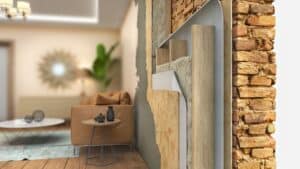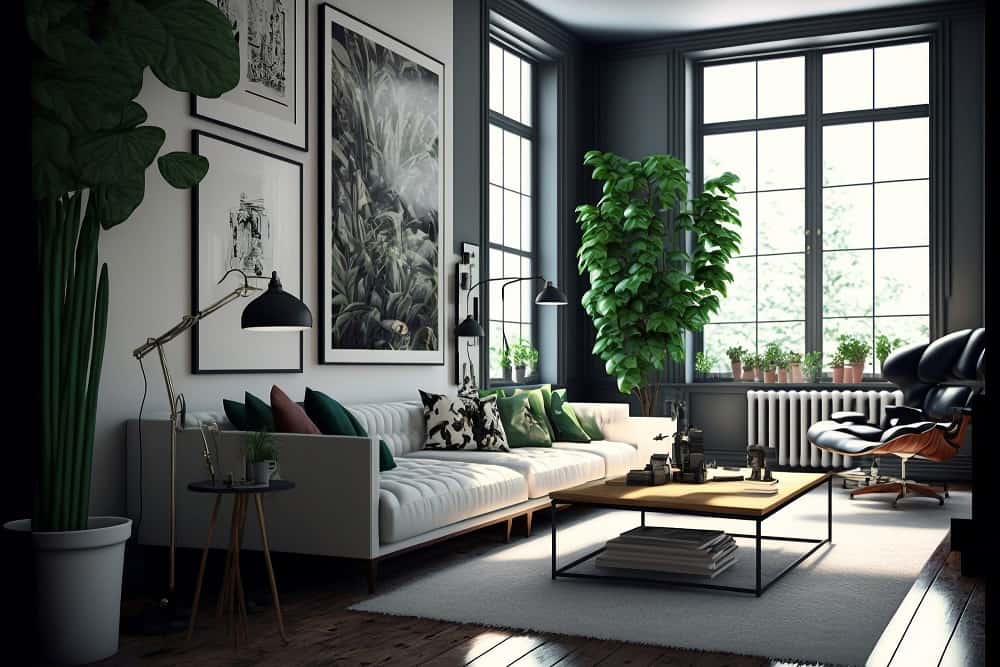Have you ever tried going ‘greencore?’
It’s not exactly new. Many home design trends have emphasized reconnecting our abodes to nature.
And for good reason; incorporating green elements into your home design benefits the environment and your overall well-being. By integrating sustainable and eco-friendly features, you can create a healthier living space while reducing your carbon footprint. More than just an aesthetic, it’s a way to give back to the world and flourish in your own space at the same time.
Whether you’re building a new home or renovating, here are different ways to integrate green elements seamlessly:
1. Introduce Indoor Plants
This is rather obvious; no green home designs can go without them.
Aside from enhancing aesthetic appeal, indoor plants offer numerous benefits to you and your living space.
They improve indoor air quality by filtering out harmful pollutants present in the air. They also absorb carbon dioxide and release oxygen as part of regular photosynthesis, purifying the air you breathe.
Moreover, plants have been shown to create a calming ambiance in people’s homes. Their presence adds a touch of natural beauty and tranquility to any space. That can help reduce stress, promote relaxation, and improve mental well-being.
All in all, incorporating indoor plants into your home design creates a connection to nature, enhancing your overall well-being. Just make sure you go with low-maintenance and low-allergen ones. The last thing you want is to have the things supposedly improving your wellness become triggers for health issues and utility problems.

2. Upgrade To Energy-Efficient Lighting
Energy-efficient lighting is a crucial green element for the following reasons:
- Reduced energy consumption: Energy-efficient lighting, such as LED bulbs, uses less energy than traditional incandescent bulbs. LED lights are designed to convert a higher percentage of energy into light rather than heat, making them more reliable.
- Cost savings: Energy-efficient lighting translates into long-term cost savings. While LED bulbs may have a slightly higher upfront cost, they can last up to 25 times longer than incandescent bulbs. That means fewer replacements and lower maintenance costs. Additionally, the reduced energy consumption of energy-efficient lighting results in lower electricity bills over time, giving you a lot of savings.
- Environmental impact: As mentioned, traditional bulbs waste significant energy by emitting heat. That translates to increased greenhouse gas emissions. You can mitigate this problem through energy-efficient lighting. That makes your home a contributor to sustainability efforts.
The benefits of energy-efficient lighting make it an excellent choice for a green home design. Switch to them and enjoy the advantages for your wallet and the planet.
3. Improve Insulation
Proper insulation is essential for maintaining a comfortable indoor temperature and reducing energy consumption. When you have a well-insulated home, you’ll require less heating and cooling.
You can do this by taking the following steps:
- Use insulated window coverings: Consider switching to insulated curtains or blinds. These can help reduce heat transfer and improve the efficiency of your HVAC system, an often-overlooked aspect of climate control in homes.
- Upgrade windows and doors: Windows and doors are potential heat loss areas. Consider installing weatherstripping or adding door sweeps to regulate the circulation of heat and air through their immediate areas.
- Insulate floors and crawl spaces: Insulating floors above unheated spaces, such as crawl spaces or garages, helps maintain a comfortable indoor temperature. Materials like fiberglass batts or rigid foam can be installed between floor joists or under subflooring.
Never try to handle big insulation jobs on your own unless you have actual technical expertise. Turn to a professional HVAC firm for anything more than a few changes or tweaks. They follow local building codes and consider your specific needs for the best results.
4. Embrace Solar Power
A popular source of alternative energy, you should consider installing solar panels on your roof. Solar energy is a clean and renewable source of power that can significantly reduce your dependence on the grid. It saves you money after the hefty upfront cost in the long run.
5. Try Rainwater Harvesting
It’s a simple yet effective way to reduce reliance on municipal water supplies.
Install rain barrels or a rainwater harvesting system to collect and store rain. You can use it to water your garden, wash your car, or flush toilets. This eco-friendly practice conserves water and reduces the strain on local supplies.
6. Choose Renewable Flooring Materials
When choosing flooring materials for your home, choose sustainable options such as bamboo, cork, or reclaimed wood. These materials are renewable and have a lower environmental impact than conventional hardwood. Besides helping preserve forests and reduce carbon emissions, they add a touch of natural beauty to your home.
Simple, Smart Choices
You can create a sustainable and eco-friendly living space by taking one or many of these choices at once. That all depends on your budget and capabilities. Just know that you can work with experts to help bring your ‘green’ house to life. Embrace these elements and enjoy a healthier home while positively impacting the planet.

Recent Comments